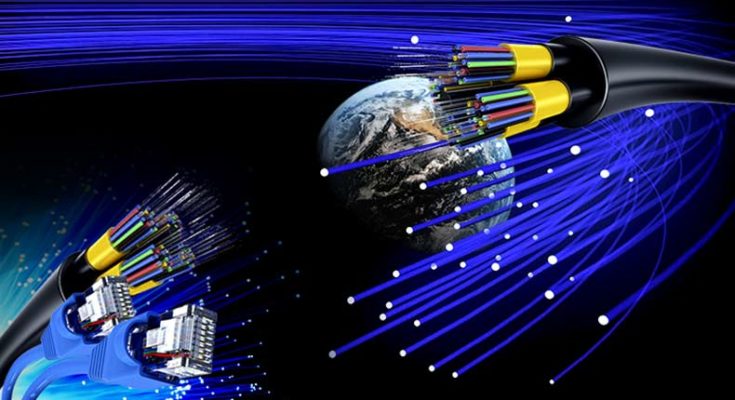In a recent development at the University of California, Engineers have broken the “capacity limit” for data transmission through ‘optical fiber’. The power of signal through ‘optical fiber’ has increased by 20 times. Along with that data, travelling distances are also increased. As a result of this, Internet can be very fast and cheap.
Increase in data transmission rate in optical fiber was difficult through a long period of time. Additional stream of power usually deformed the valuable data transferring in the optical fibers were almost irretrievable, because fiber optic systems of the recent days are feeble. But, engineers of the University of California have broken the “capacity limit” for data transmission in optical fiber. They have really opened the door for the future networking systems to transfer more information at a cheap rate.
In a report, the university said that the engineers decrypted the information which travelled 12000 km through optical fibers. The information was sent with ‘standard amplifiers’, and no ‘electronic regenerators’ were used for this. In any case, at a certain point, that power build begins to make impedance, debasing whatever is coming to the point of the matter of not conveying the information by any means. Demand of internet connectivity today is increasing rapidly. The university also said that our engineers have been trying to solve this by increasing the signal which pass through optical fibers.
Read: Netherlands initiated world’s first Solar Bike path which converts sunlight into electricity
Engineers have thoroughly analysed that the measure of obstruction between bearers increments — sooner or later, the information turns out to be distorted to the point that it cannot be unravelled and decoded by the recipient. By increasing the power too much, laser beams mix-up with one another, and signals and informations that are carried by the beams get lost. In modern system, ‘light wave transmission’ which carries 80-200 channels with ‘electronic regeneration’ is a costly method and lack of transparent ‘optical network’.
The university told that by abolishing the system of ‘electronic regeneration’, costing of ‘network infrastructure’ would become more inexpensive and transfer of information would be more efficient. This new invention will keep signal distortions in predictable range, and also reversible by the help of wideband “frequency combs”. So, optical fiber network throughout the world would receive a considerable improvement.
Stojan Radic, a professor of the Department of Electrical & Computer Engineering, University of California told that the process they have developed was not ‘random’, and in their study, they have presented the maximum advantage of removing the power blockade for ‘optical fiber’. He added that their approach was to remove the power limitation and to allow the signals as far as it could travel in ‘optical fiber’ without the help of ‘electronic regenerator’.
Read: https://www.bigumbrella.co.in/zenwatch-by-asus-created-a-new-era-of-tech-style/
‘Electronic repeaters’ are very much costly for moving a signal, but at the same time there is no solution for the issue of ‘signal distortion’. With the help of newly developed wideband “frequency combs” by the researchers, informations are conditioned before they are sent out, so interference that occurs through the way of transmission is predictable.
Obviously, a lot of work is to be done on this new development before implementing into the real world internet network. The engineers of California University have increased the expectation of the world towards a solution for developing existing ‘optical fiber’ infrastructure.





